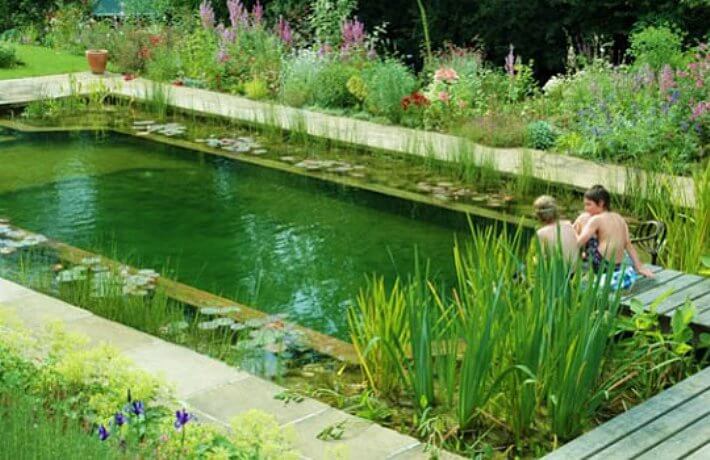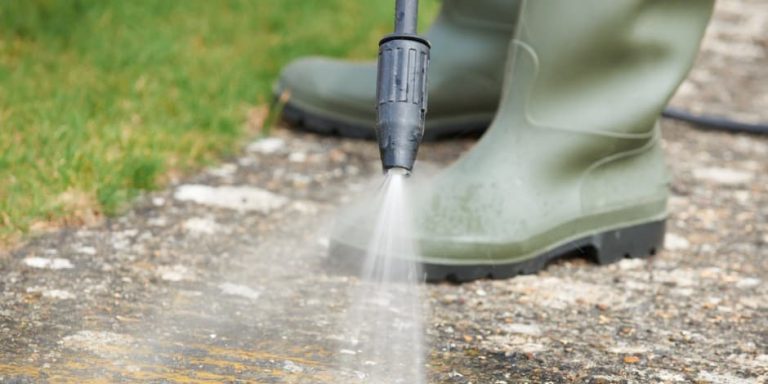
Natural swimming ponds and eco-pools are growing in popularity as homeowners and property managers seek chemical-free, eco-friendly alternatives to traditional chlorinated pools. But maintaining the aesthetic and function of these water features can be tricky—and some wonder whether power washing is a safe solution for cleaning surrounding surfaces, walls, or even the pond itself.
The answer? It depends. Let’s explore the environmental and biological factors that determine whether power washing is appropriate—and how to do it responsibly if needed. 💧
🌊 What Are Natural Swimming Ponds and Eco-Pools?
Unlike traditional pools, these systems:
- Use biological filtration (plants, bacteria, and gravel) instead of chlorine
- Feature natural zones, such as regeneration beds or wetlands
- Often include stone or organic walls instead of concrete
- Support insects, frogs, and aquatic plants as part of the ecosystem
The goal is to maintain balanced water chemistry and allow for a more natural swimming experience.
🧼 Why People Consider Power Washing
Owners of natural ponds and eco-pools may want to use pressure washing for:
- Cleaning surrounding stone patios or decks
- Removing algae or scum from pond walls
- Blasting away silt buildup in shallow zones
- Refreshing fountain or waterfall elements
While it can make things look better short-term, power washing can have serious downsides if done carelessly. 😬
Browse Amazon Here For Top Rated Power Washers And Accessories
❌ The Risks of Power Washing Around Eco-Water Systems
1. Disrupting Biological Balance
Power washing can:
- Strip away the biofilm lining pond walls, which helps manage bacteria
- Kill or dislodge beneficial microbes in gravel beds
- Disturb sediment layers that naturally filter impurities
2. Polluting the Water
Runoff can carry:
- Detergents or soaps, which are toxic to fish and insects
- Oils or grime from nearby patios
- Silt and sediment, which reduce water clarity and oxygen levels
3. Harming Wildlife
Pond systems often house:
- Tadpoles and frogs 🐸
- Beetles, snails, and dragonfly larvae
- Small fish or invertebrates
Even low-pressure spraying or runoff can harm these sensitive organisms.
✅ When Power Washing Can Be Used (Safely)
You can power wash near or around an eco-pool if:
- You’re only cleaning hard surfaces away from the waterline
- You use no soap or chemicals whatsoever
- All runoff is captured or redirected into absorbent ground
- The pond system is drained or sectioned off (in rare maintenance cases)
💡 Safer Cleaning Alternatives
To maintain beauty and hygiene without harming the system, consider:
🧽 1. Soft-Washing
Use a low-pressure system with plain water and a scrub brush. Clean around stonework or water features gently.
🪣 2. Manual Debris Removal
Use skimmers, nets, or bottom vacuums to collect:
- Algae buildup
- Fallen leaves
- Insect nests or scum
🐌 3. Biological Helpers
Introduce pond snails, oxygenating plants, and shade-loving vegetation to naturally control algae and debris.
🧑🔧 Maintenance Best Practices
- Clean only when necessary—too much disruption can destabilize your pond
- Avoid cleaning in peak wildlife breeding seasons
- Schedule maintenance during dry weather, so runoff doesn’t enter the water system
- Never drain the pond unless guided by a certified pond technician
🧠 Final Thoughts
Power washing and eco-pools don’t always mix—but with the right planning, it’s possible to clean surrounding areas without causing damage. If you’re maintaining a natural water feature, always prioritize manual and biological cleaning methods over high-pressure tools.
Your pond is more than a pretty feature—it’s a living ecosystem. Treat it that way. 💚🐟🌿
Browse Amazon Here For Top Rated Power Washers And Accessories






